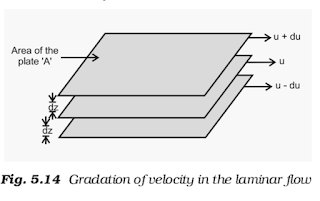

This is also known as " diffusion-controlled rate" since rates of encounter are themselves controlled by diffusion rates (which in turn depend on the ~ of the medium and the dimensions of the reactant molecular. The chaos of the individual molecular trajectories disappears on large scales.Ī rate of reaction corresponding to the rate of encounter of the reacting molecular entities. In consequence of the ~ or friction of the air small bodies do not fall with a constantly accelerated velocity, but soon reach a speed which remains uniform for the rest of the fall the smaller the body the slower this speed.įluids are very complicated on the microscopic scale, however, the Navier-Stokes equations depend only upon the density and ~ of the fluid to describe bulk behaviour. volatize To make volatile to cause to pass off in vapor. volatile A substance which is easily vaporized. volatile solids the quantity of solid in water, wastewater or other liquids, lost on ignition of the dry solids at 600 oC. The ~ is a characteristic property and is a measure of the combined effects of adhesion and cohesion. ~ the resistance offered by a fluid (liquid or gas) to flow. Substances that have the possibility for multiple hydrogen bonds exhibit even higher viscosities. Substances having a hydrogen bonding in it have a usually higher ~ than those which don't have any hydrogen bonding in them. Kinematic ~ - The ratio of ab solute ~-or a fluid's resistance to flow-to the density of that fluid this is commonly measured by determining the time it takes a liquid to travel through a capillary under the in fluence of gravity, using an instrument called a capillary viscometer.

So, by measuring the slopes of the average of R2 vs time plots shown above, one can extract D at the two temperatures. H is the ~ of the surrounding molecules (cis-PBD above) and a is the radius of the particle (CH4) diffusing through the other molecules. Volatility is the ability of a liquid (or solid) to escape and form a vapour. Honey for example has a relatively high ~. Liquids with a relatively high resistance to flow have a high ~. ~ refers to a substance's resistance to fluid flow. ~ is a specifi cation for a number of oils, solutions and blends. The resistance the a liquid (or gaseous) system offers to flow when it is subjected to shear stress. Volt (V) the SI unit of potential difference. Volatile refers to a liquid or solid having a relatively high vapor pressure at normal temperatures ~ the resistance to flow that is exhibited by all liquids and gases Volatile - a substance that readily vaporizes. Visible light - electromagnetic radiation that can be perceived by the human eye, usually from 380 nm to 750 nm (400 to 700 nm). ~ - how readily a fluid flows, which is the ratio between an applied shear stress and the resulting velocity gradient. The basic cause of ~ is the random nature of thermally-induced molecular motion. Gases, like all fluids, exhibit a resistance to flow, a property known as ~. It is defined as the ratio of the magnitude of an applied shear stress to the velocity gradient that it produces. ~ - ~ is the consistency of a moving fluid and its resistance to deformation. Experimentally, the frictional force between two liquid layers moving past each other is proportional to area of the layers and the difference in flow speed between them. () coefficient of viscosity.The resistance a liquid exhibits to flow. If the liquid is actually non-Newtonian, the apparent depends on the type and dimensions of the apparatus used. The ratio of stress to rate of calculated from measurements of forces and velocities as though the liquid were Newtonian. Resistance of a fluid to shear deformation.


 0 kommentar(er)
0 kommentar(er)
